On-Demand PDH Classes
 Our webcasts allow you to complete training courses at your own pace, fitting it into your schedule so it doesn't affect your workflow. All classes are completed through our user-friendly online portal. Our webcasts allow you to complete training courses at your own pace, fitting it into your schedule so it doesn't affect your workflow. All classes are completed through our user-friendly online portal.
The portal allows you to choose courses, track progress and check on the results of any applicable tests, and receive any appropriate PDH credits and certificates. Our online courses include instruction in topics such as Battery Technician Safety, Battery Room Assessments, Seismic Rack Overviews as well as Factory Installer Training.
Click here for more information about our online training program including a course list.
Product Installation & Maintenance
Factory Installer Training Level 1 - New Installations
EnviroGuard's UL Listed Spill Containment systems utilize a preformed liner, modular barriers and fire-resistant acid neutralization and absorption pillows. This course presents a proven process for installing the spill containment systems to ensure system is liquid-tight and installed per Underwriters Laboratories accepted procedure. Installation technicians will be able to confidently install EnviroGuard's spill containment systems for flooded, VRLA, battery cabinet and relay rack applications.
 
Factory Installer Training Level 2 - Retrofit Spill Containment
Retrofitting a UL Listed spill containment in an existing system with batteries in place and live, requires care and special techniques. This course presents a proven technique and procedure for retrofitting a liner  spill containment system under existing battery systems to ensure minimal labor, maximum system integrity and a reliable, liquid-tight containment system. This is an online E-learning module and is a prerequisite to the Level 2 Part 2 onsite module. Both modules must be completed to fully prepare installers of the proper techniques and precautions for retrofitting a battery system. spill containment system under existing battery systems to ensure minimal labor, maximum system integrity and a reliable, liquid-tight containment system. This is an online E-learning module and is a prerequisite to the Level 2 Part 2 onsite module. Both modules must be completed to fully prepare installers of the proper techniques and precautions for retrofitting a battery system.
Part 2 of this module provides hands-on instruction of the proven retrofit technique and procedure for retrofitting a liner spill containment system under existing battery systems to ensure minimal labor, maximum system integrity and a reliable, liquid-tight containment system. This module may be completed during an actual retrofit installation. Both modules must be completed to fully prepare installers of the proper techniques and precautions for retrofitting a battery system.
 

Factory Installer Training Level 3 - Pillow Replacement
This comprehensive training course presents a proven process replacing battery neutralization and absorption pillows in the spill containment system underneath standby power battery systems. Pillows should be replaced when worn, damaged or during battery replacement to maintain full performance of the UL Listed neutralization system ensuring compliance to Federal, State and local codes and regulations. In addition, pillows replacement may be required to upgrade to FM Approved pillows as required by FM Global and other commercial insurance companies.
EnviroGuard's Pillow Replacement and Recycling program provides a turn-key process for pillow replacement including recycling of non-contaminated pillows. This course provides instruction on the recommended process to manage pillow replacement and completing the required documentation to qualify for the Pillow Replacement and Recycling program.
 
Battery Room Compliance
 VRLA Battery Compliance VRLA Battery Compliance
Valve regulated batteries provide several conveniences for the end user. However, maintenance and code compliance are still required for this battery type. Regulation may vary by municipality and the AHJs interpretation of the code. Learn how to properly assess your battery room design to ensure it complies with the local code.

Battery Room Safety & Current Technology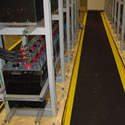
Recent changes in building codes and best practices for standby power systems in critical sites requires those involved in specifying solutions to consider new technology to meet stringent new standards. Engineers and essential facility managers are responsible for specifying new solutions to safeguard the facility and ensure updated code compliance. This session presents new considerations that address the changes in codes and regulations for standby power systems and explains todays solutions in accordance with new requirements and
standards.

Introduction to Stationary Battery Sizing Principles
Battery types and voltages vary depending on the application they are intended for. Most common categories for standby power systems are Datacenter (UPS), Utility, Telecom, and other renewable energy applications. Learn about basic selection and sizing of standby power batteries including an example of sizing using constant current application. Presented by Rick Tressler

Battery Standards, Codes & Regulations
Knowing the context of codes and regulations provides an understanding of what safety and compliance equipment is required. This session provides an in-depth review of the key codes and regulations referencing stand-by battery systems.

Completing a Battery Room Assessment
Site Assessments provide a measurement of compliance to codes, regulations and industry best practices. This module reviews environmental, health and safety checkpoints within the stationary battery room to enable the creation of an action plan for compliance improvement. A review of the each checkpoint includes the code or standard reference, what to look for and what questions to ask during the assessment.

Compliance for Lithium Battery Systems
Knowing the technology and context of codes and regulations provides an understanding of
what safety and compliance equipment is required for Lithium batteries. This session provides
an in-depth review of the standards and regulations referencing stand-by battery systems.
FDNY Battery Room Compliance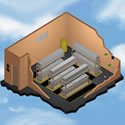
The spirit of code and regulation is to prevent fires, ensure safety for the building occupants and protect equipment and the environment. Fire codes require standby battery systems to utilize an approved method and materials for control and neutralization of unintentional spills.
Codes vary by state and are dependent on model code adoption. Cities may make amendments to state and model codes. This course addresses the special requirements laid out by AHJ in NYC

Battery Room Safety
Completing a Safety Self Assessment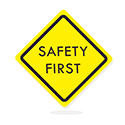
Meeting codes and requirements in your battery room can be a challenge with many regulations across multiple Authorities having Jurisdictions (AHJ). Facility managers and service teams should be educated on proper procedure on how to perform a site assessment and be a trusted adviser to their client and facility. Also receive the tools you need to be able to properly perform the assessment.

Battery Room Safety Awareness
The Battery Room Safety Awareness course provides personnel entering a battery room with basic knowledge of battery systems, electrical and chemical hazards, required PPE, recommended safety practices and battery room safety procedures. Based on the Safety Section of IEEE document P1657 Recommended Practices for Personnel Qualifications for Installation and Maintenance of Stationary Batteries) and NFPA 70E Standard for Electrical Safety in the Workplace, this course provides training to facilities and contractors with personnel that will work within or enter battery rooms.

Specifying Hydrogen Detection & Monitoring
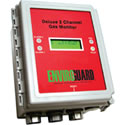
Hydrogen gas monitors are a critical and functional component in standby power battery rooms. They provide compliance assurance and notification of necessary corrective action should hydrogen gas approach explosive levels. Learn the principles of ventilation and how to specify a hydrogen detection system for the battery room.

Battery Room Safety Products - Spill Kits
Battery rooms require minimum safety equipment to reduce exposure due to electrical and regulated materials hazards.

Specifying Battery Room Safety Products
This training prepares the learner to make the right decisions about when, where, and how to properly use eye protection, PPE, eyewash stations, spill kits, voltage protection and more.

Specifying Protective Covers and Shields
Battery Protective Covers protect personnel from dangerous battery voltage while in the battery room. This product is a required part of the battery room to be in compliance with NFPA 70E and OSHA 29 CFR.

Hazardous Material Management
Hazwoper First Response Awareness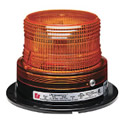
First responders at the awareness level are individuals who are likely to witness or discover a hazardous substance release and who have been trained to initiate an emergency response sequence by notifying the proper authorities of the release. They would take no further action beyond notifying the authorities of the release. This course covers broad issues pertaining to the hazard recognition at work sites. This course, while identifying different types of hazards, also suggests possible precautions and protective measures to reduce or eliminate hazards at the work place.

Hazard Communication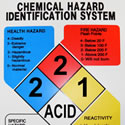
This training describes the OSHA Hazard Communication requirements for evaluating the potential hazards of chemicals and communicating information concerning hazards and appropriate protective measures to employees. Also addressed is the requirement for development and maintenance of a written hazard communication program for the workplace, including lists of hazardous chemicals present; labeling of containers of chemicals in the workplace, as well as of containers of chemicals being shipped to other workplaces; preparation and distribution of material safety data sheets to employees and downstream employers.

Spill Containment
Specifying Spill Containment and Neutralization
Learn about the type of spill control and neutralization products available for various applications and how to size them. Explore unique applications and features that can be added to your containment system to meet compliance regulations and an easier implementation.

Battery Containment Spill Containment 102
Spill containment is a requirement of federal, state, and local fire and hazardous material codes, regulations, ordinances and guidelines. While these vary by municipality, recent fire codes for stand-by battery systems call for approved methods and materials for acid spill control and neutralization. This module provides an understanding the requirements of the Authorities Having Jurisdiction and how to specify spill control and neutralization.

Specifying Pans and Trays for Utility Applications
Pans placed under stationary battery systems have been around for many years in the utility industry. However, new specifications based on the application exclude the use of pans. Learn about the new technology for pans based on the battery type and how it meets code requirements.

End of Life Neutralizing Pillow Management
How should battery spill containment pillows be managed at end of life? To prevent voiding the UL Listing on the entire spill control system, it is important to follow UL Guidelines. We can assist you in the decommission and disposal of your battery spill containment pillows in accordance with the law and system certification, and replace them with new and improved Dual UL and FM Approved product.

Seismic Requirements
 Specifying IBC Seismic Racks (for Essential Facilities) Specifying IBC Seismic Racks (for Essential Facilities)
Learn the basics on how International Building Code replaces Uniform Building Code requirements for seismic racks, and how to create an SDS level in your area to properly choose a seismic rack.

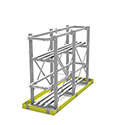 UBC, IBC 2012, IEEE Mod. & High, NEBS certified racks UBC, IBC 2012, IEEE Mod. & High, NEBS certified racks
Learn about the UBC, IBC 2012, IEEE 693 Moderate, IEEE 693 High, and NEBS standards.

|










 VRLA Battery Compliance
VRLA Battery Compliance















 Specifying IBC Seismic Racks (for Essential Facilities)
Specifying IBC Seismic Racks (for Essential Facilities) UBC, IBC 2012, IEEE Mod. & High, NEBS certified racks
UBC, IBC 2012, IEEE Mod. & High, NEBS certified racks